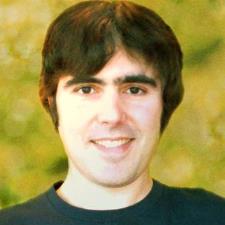Mark O. answered • 07/04/16
Tutor
5.0
(167)
Learn Physics, Math, and Comp Sci from Professional Scientist
Hi Logan,
We are told that the population in 2012 is 6.72 million. We are also told that the exponential growth rate is 1.83% per year. This means that each year, one can multiply the population of the previous year by the factor 1.0183 to get the current year's population. Each successive year, the population is 1.0183 times the population of the current year. Let us call the year 2012 our year t = 0.
Let P(t) be the population at year t.
Let P0 be the population at t = 0, which corresponds to the year 2012, or 6.72 million.
(a)
The exponential growth equation is
P(t) = P0(1.0183)t
or
P(t) = 6.72(1.0183)t where P(t) is in millions of people
(b)
The year 2018 corresponds to t = 6
P(6) = (6.72)(1.0183)6 = 7.49 million people
(c)
When will P(t) = 11 million
Solve the equation for t
(1.0183)t = 11/6.72
Take the natural log of each side
ln(1.0183t) = ln(11/6.72)
We can use the law of logarithms ln(ab) = bln(a) to take t from a power to a coefficient, as in
tln(1.0183) = ln(11/6.72)
Now, solve for t:
t = ln(11/6.72) / ln(1.0183)
t = 27.2 years
We can just round and say t = 27.
So, the corresponds to the year 2012 + 27 = 2039
In the year 2039, this model predicts that the population of the city will reach 11 million people.
(d)
Find the doubling time. We want the time where P(t) / P0 = P(t) / 6.72 = 2
We can write our main equation as
(1.0183)t = P(t)/6.72
But, we want P(t) / 6.72 = 2
This means that
(1.0183)t = 2
Take the natural log of each side.
ln(1.0183t) = ln(2)
Using the same log of logarithms, we can write t as a coefficient.
t ln(1.0183) = ln(2)
Solving for t we have
t = ln(2) / ln(1.0183) = 38.2 years
We can approximate this as t = 38 years.
The doubling time is 38 years.
Mark O.
Which part is not correct?
Report
07/05/16





Logan B.
07/05/16